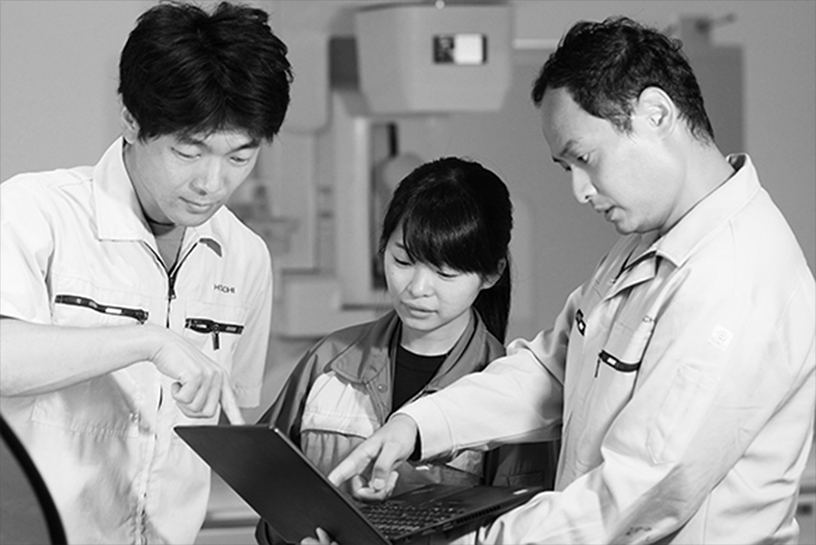"I love product-oriented development." Design engineers went beyond the design of the product as a "tangible" good and considered customer's experiences. Let's take a look at the blueprint drawn by R&D Yuji Sakai.
Firmware. This is what I develop in my field of expertise. For example, a mechanism that controls the timing and intensity of X-ray irradiation using detectors and sensors. Obviously, firmware may not be easy to picture as hardware or software because it is invisible. However, this is one of the most basic yet crucial roles in controlling the system.
Since the beginning of the project, I was determined to contribute to hospital management.
This is because the firmware collects information directly linked to hospital management. They could be the frequency of system use, examination density, or time spent for procedure during treatment. That's why I was conscious of the benefits of hospital management throughout the development period.

I was shocked. The workload of healthcare professionals is incredibly heavy. It is a fact that I found through various collaborative studies and hospital visits. Specifically, healthcare professionals don't even have time to go to the bathroom.
In such a situation, it is difficult for doctors and radiographers to constantly deal with patients in the best condition, even if they do their best. In response to this, I strongly felt, "There is something I can do".
I came up with the idea of providing "quantitative data" that doctors and radiographers can present to hospital managers, finance, and accounting staff and offered improvement proposals. I was convinced that patients would benefit holistically if the medical staff are in optimal condition.
As soon as development began, I decided to collect information related to "system usage". With this objective data, a hospital can compare its own with nearby universities and hospitals. This makes it easier for stakeholders involved in management to consider solutions such as the strengths and weaknesses of hospitals, the current situation, and the number and placement of staff. In recent years, human resources, consultation hours, and working styles have diversified regardless of region. In such an era, information may be the "key to management." With new insights from the research, I will be exploring the next development in firmware.
I want to position CUREVISTA Open as a “hospital consultant” that is capable of withstanding high frequencies of usage and fulfil the mission of supporting human health in the long term.
Today, maintenance services according to the frequency of use are common in high-priced diagnostic systems. However, this naturally requires expenses and potentially places pressure on management. To address this issue, I decided to develop a "report based on data analysis" and a "systematic framework that proposes the optimum option according to usage conditions" through firmware.
Knowing that the system I developed may “save someone somewhere today” through user-centric product development, I am inspired to do my best.

















